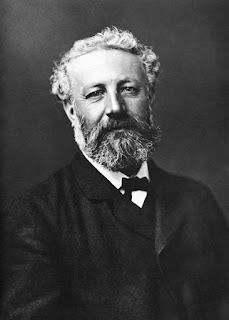Alexei Maximovich Peshkov,
better known as Maxim Gorky, had a fabulously successful career as a wealthy
and famous writer, with friends in high places, but he very likely died on orders
given by one of those friends. The
friend’s name was Josef Stalin.
Now known mainly for his
play The Lower Depths, an early
example of social realism in drama, and his autobiography My Childhood, Gorky was honored by having his picture on cigarette
boxes, postcards, and a Russian postage stamp, and his name affixed to numerous
city streets, Russia’s main literary institute, the world’s largest airplane
(at the time), and his own hometown itself. But his leftist political activism got him trouble not only
with Tsarist authorities, but also with Vladimir Lenin, Vyacheslav Molotov, and
his on-again, off-again pal Stalin.
Born March 28, 1868, in
Nizhni Novgorod (which changed its name to Gorky in 1932), Gorky himself best
chronicled his early life in a résumé sent to an editor who requested some
biographical information:
1868--Born.
1878--Shoemaker's
boy.
1879--Apprentice
to a designer, painting ikons.
1880--Cabin
boy on a Volga steamer (where the ship's cook taught him to read).
1883--Worked
in a biscuit factory.
1884--Porter.
1885--Baker's
boy.
1886--Dummy
in a village theatre.
1887--Fruit
seller.
1888--Attempted
suicide.
1889--Railway
employee.
1890--Clerk
to an advocate (learned to write).
1891--Operative
in a salt mill; later vagabond.
1892--Wrote
his first novel, "Makar Chudra."
1903--Celebrity
and riches.
He used the pen name of
“Maxim Gorky,” which means Maxim the Bitter. As in his writing, which typically conveys the plight of
downtrodden workers, his new name reflected his anger at the Tsarist regime and
his proletariat revolutionary tendencies. His seditious utterances forced him
into exile in Italy, but he returned to Russia in 1913 when the Tsar granted
amnesty. He allied himself with
the Bolsheviks but fell out with Lenin and again went into exile in 1921. All the while his fame as a writer
increased. He finally returned to
Russia in 1928, at the personal invitation of Communist Party leader Josef
Stalin, who, after organizing extravagant celebrations of Gorky’s reunion with
his native land, then placed him under virtual house arrest.
Gorky was married (sort
of) three times. He left his first wife, Ekaterina Pavlovna Peshkova, after a
short while, but owing to intricacies in Russia law, neglected to divorce
her. He took up with an actress
name Maria Fydorovna Andreyeva, but living openly with her in that era caused
such a scandal that the two of them were barred from New York hotels, William
Dean Howells canceled a dinner party in Gorky’s honor, and Mark Twain withdrew
his support from one of his humanitarian causes. From 1920 until 1933 he and his secretary, Moura Budberg,
lived as common-law husband and wife.
Budberg was later the mistress of H. G. Wells and a double agent for the
Russian secret police and British intelligence.
One of those who might be
called “spiritual but not religious,” Gorky rejected organized religion, but
despite his Marxism in social matters, he was not an atheist or materialist. When asked to express
his views on religion by the French journal Mercure
de France, Gorky said that he opposed the religions of Moses, Christ, and
Mohammed, but he acknowledged the value of religious sentiments, which he
described as an awareness of a harmonious link that joins man to the universe.
Frail from repeated bouts of tuberculosis, which had plagued him since the
age of twenty-one, Gorky was living in a dacha outside Moscow in 1936, grieving
the sudden and unexpected death of his son two years earlier. Attacks against
his reputation began to appear in the principal Soviet newspaper, Pravda, but Gorky was spared seeing them
since a special edition, of which only one copy was printed, was prepared for
delivery to him. Under treatment for his pulmonary problems, he was visited by
Stalin early in June. On June 18, 1936, Gorky died, quite unexpectedly, at the
age of sixty-eight.
In 1938 the chief of Russian secret police, Genrikh Yagoda; Gorky’s
secretary, Petr Petrovich Kryuchkov; Gorky’s doctor, Lev Levin (who also was
Stalin’s personal physician), and two other doctors were convicted of conspiring
to murder both Gorky and his son. In Gorky’s case they were accused of
repeatedly administering excessive doses of pulmonary medicines, including
camphor, digalen, caffeine, and cardiosol. It was alleged that Gorky’s assassination had been
carried out on orders from Stalin’s arch-enemy, Leon Trotsky. Yagoda and
Kryuchkov were executed. Later
evidence suggests that Stalin himself ordered the assassinations.
Gorky was given an elaborate state funeral, at which the principal honored
pallbearers were Stalin and Molotov.
His ashes were buried in the Kremlin wall.



